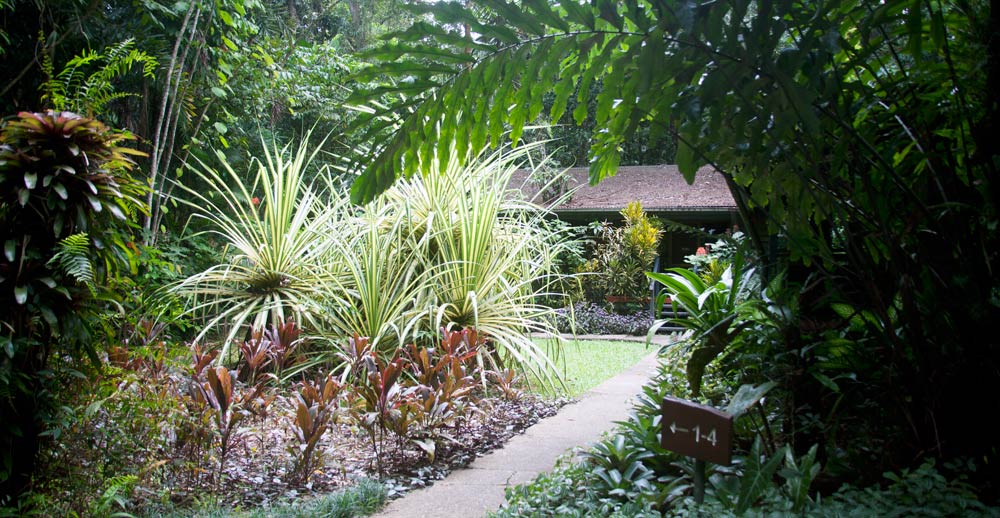The Daintree Coast is spectacular to visit and experience any time of the year and each season is unique and beautiful. This article covers some of the differences you can expect between seasons when you visit the Daintree rainforest.
What are the seasons of the Daintree Rainforest?
Australia has four seasons: December to February is the summer season, March to May is autumn, June to August is winter and September to November is spring.
However the tropical North region is most commonly referred to as having two seasons, known as – the ‘dry’ season and the ‘wet’ season. The names of these two seasons are obvious in that the dry season is when it rains much less and the wet season is when to expect heavy rainfalls and frequent showers.
Don’t let the idea of heavy rain put you off though! This can be one of the best times to visit the rainforest and experience the marvel of life and wilderness. Find out more about each season below.
Did you know?
The Kuku Yalanji people who are the traditional Aboriginal people (bama) of this rainforest area have classified there to be 5 seasons in the Daintree region. Their seasonal calendars determine their natural resource management and are based on how different things happen at certain times. For example, turtle eggs are ready to gather when the flame tree flowers and the first storm occurs.
The Kuku Yalanji seasonal calendar consists of:
Kambar: Late December to March – rain
Kabakabada: April to May – cool with rainfall easing
Duluruiji: June to September – cooler & dry with some rainfall
Wungariji: October to November – hot & dry
Jarramali: November to December – hot & stormy

Reasons to visit the Daintree during the Dry Season
The dry season is generally between May to November and is characterised by warm temperatures, minimal rainfall and very little humidity. You will be amazed by the brilliant blue skies during the day and incredible star gazing views across the panoramic sky at night.
Butterflies are in abundance, including the famous Ulysses Butterfly that dances as it flutters about with bright flashes of blue and the impressive size of the colourful Cairns Birdwing butterfly.
The dry season is ideal for nature walks, bird watching or taking a croc tour. It is also perfect weather to enjoy a snorkel trip out to the Great Barrier Reef (ask at Heritage Lodge reception for tour options and details).
This time of the year is also ideal for 4WD enthusiasts who plan to drive up the Bloomfield track or head to the tip of the cape after their stay in the Daintree.
Enjoy picturesque walks along the stunning beaches of the Daintree coast and take the time to soak up some spectacular sunshine.

Reasons to visit the Daintree during the Wet Season
Between December to April is the ‘wet’ or rainy season. During this time temperatures are hot and humidity is high. This is when Far North Queensland receives the majority of annual rainfall.
Don’t let the idea of high humidity and lots of rain put you off visiting during this season, it is well worth the experience – after-all this is the wet tropics and an ancient ‘rain’- forest!
Locals often refer to this time of year as the “green” season as everything is incredibly lush and green. Visitors regularly comment they have never seen so many shades of green.
This is when the rainforest really comes alive. Tranquil waterfalls at every bend, replenished forest with glistening leaves and the calls of frogs to serenade you in the evenings.
Take advantage of off-peak tour prices and lower crowds during this season, where you can feel like you have the rainforest and tropical beaches all to yourselves. Enjoy the pleasantly cool temperatures of the rainforest boardwalks with their protective canopy of trees to shade out the hot sun. Cool down after a day exploring, with a swim in the crystal clear water of Coopers Creek that runs alongside Heritage Lodge… in the Daintree.
Our Daintree rainforest cabins are designed to make the most out of all seasons with spacious rooms, louvre windows, air-conditioning and an undercover balcony to sit back, relax and enjoy.
Article and photography by Gemma Heggie Digital Spice on behalf of Heritage Lodge in the Daintree.
